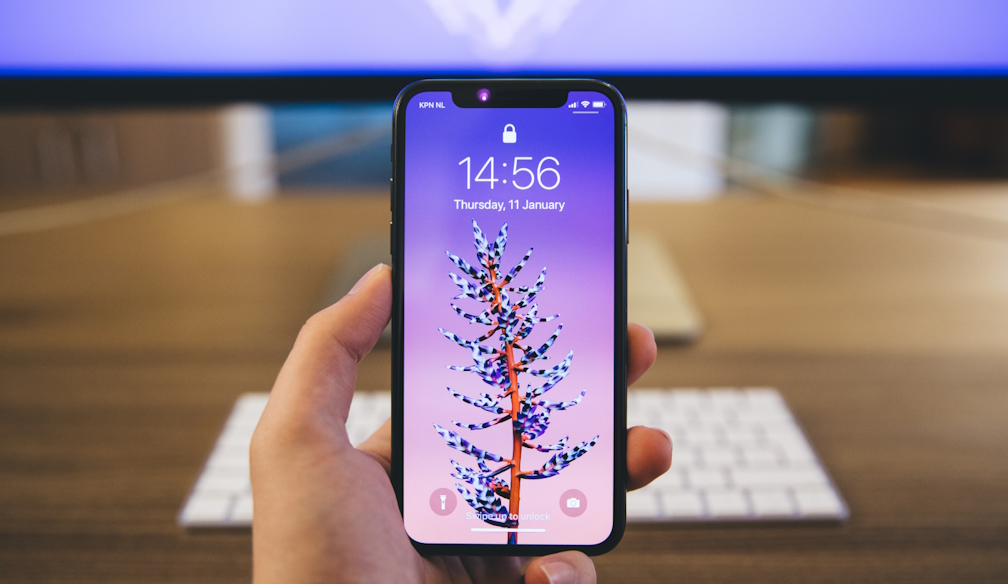The iPhone X: How it shaped & influenced future iPhones

The year was 2017. The industry and general public were abuzz with excitement and anticipation. Apple was about to unveil a new iPhone to set the future course for iPhones and other smartphones. Like a decade earlier, Steve Jobs did it with the launch of the first-ever iPhone.
Enter the iPhone X (pronounced "ten"), which marked a radical departure from the design philosophy that had been the hallmark of iPhones for years. The iPhone X wasn't just a new phone; it was a bold statement by Apple that it also wanted to dominate the mobile phone space for the next decade.
Let's look at the phone's design innovations and explore how they shaped the later iPhones.
The vanishing bezel and the arrival of the notch:
The near bezel-less display of the iPhone X was a rage back then. Gone were the chunky bezels that housed the earpiece, front-facing camera, and Touch ID sensor. Instead, you get a stunning 5.8-inch OLED display stretched almost edge-to-edge. Talk about an immersive viewing experience unlike anything ever seen on an iPhone.
It wasn't just aesthetics at play here. Apple played smartly and provided a larger screen viewing experience without increasing the phone's physical footprint. It was a unique selling point. Once again, Apple took the lead, read the consumers' moods, and went for a bigger display.
But it came at a cost. The traditional home button, which housed the Touch ID fingerprint sensor, had to go. This bold innovation was polarizing at the time. But, it paved the way for new forms of interaction and security.
New and secure Face ID authentication:
The notch, a black cutout at the top of the display, now housed the TrueDepth camera system, which made Face ID possible. This facial recognition technology substituted Touch ID as the primary and new method of unlocking the iPhone.
Again, Apple played with the Face ID because fingerprint sensors were well-established and highly secure. But it paid off, thanks to its speed, convenience, and superior security.
It wasn't always smooth sailing, but Apple continuously refined the technology. Today, Face ID is super-fast, smooth, accurate, and works in various lighting conditions. It's now an integral part of the iPhone experience and is used for other functions, too, like authorizing payments with Apple Pay and even animating emojis in Memoji.
Design innovations that last:
The iPhone X's design choices had a profound impact on future iPhones. Here's a closer look:
- Bezel-less displays: Following the X's lead, all later iPhones have adopted a near-bezel-less display design. Android phones also followed suit. Samsung, Google Pixel, Xiaomi, and others offer near-bezel-less display designs. It provides users with more screens in a compact form factor.
- The notch experience: Despite its detractors, the notch has become a signature design element of iPhones. Apple has continuously shrunk the notch size over the years, finally eliminating it in the top-end models of the iPhone 15 series.
- The home button is history: The removal of the home button facilitated a shift to gesture-based navigation. It took some getting used to, but now gestures like swiping up for home and swiping diagonally for multitasking have become second nature for iPhone users.
A ripple effect on iPhone performance:
The iPhone X's design wasn't just about looks; it impacted how iPhones performed:
- Animoji and Memoji fever: The TrueDepth camera system that enabled Face ID also introduced fun features like Animoji and Memoji. These expressive animated characters, controlled by the user's facial expressions, became a rage, showcasing the iPhone's potential for augmented reality experiences.
- Improved selfie camera: The TrueDepth camera system also significantly enhanced the selfie camera. It led to a surge in the popularity of selfies and video calls, changing our communication behaviours.
- Wireless charging: The iPhone X dumped the traditional aluminium back for a glass one. It enabled wireless charging, a feature now widely used for convenience.
The iPhone X: The legacy continues
The iPhone X wasn't without its critics. Some lamented the notch, the high price, and the learning curve associated with Face ID. But there's no denying its impact. The iPhone X redefined what an iPhone could be, pushing the boundaries of design and functionality.
Its design choices became the blueprint for future iPhones, shaping the way for newer iPhones that we see and use today. The iPhone X was a turning point in iPhone history, a testament to Apple's continuous pursuit of innovation. Even in 2024, the iPhone X continues to inspire and influence smartphone design across the industry.
FAQs:
- Is the iPhone X worth buying in 2024?
The iPhone X is no longer the latest iPhone but can still be a good value for budget-conscious buyers. While it lacks the latest features and top-of-the-line performance compared to newer models, it can still handle most everyday tasks and offers a beautiful display and a solid camera. However, remember that Apple might soon stop providing software updates for the iPhone X, a security concern.
- How does Face ID on the iPhone X compare to Face ID on newer iPhones?
While the core technology remains the same, Face ID on newer iPhones is faster and more secure than on the iPhone X. Apple has improved the TrueDepth camera system over the years.
- What are some common issues with the iPhone X?
Battery life can be an issue for some iPhone X users, especially older models. Some users also report occasional glitches with Face ID. As with any phone a few years old, there's also a chance of encountering screen cracks or other hardware problems, depending on how well it's been cared for.
- Will the iPhone X ever get rid of the notch?
No, the iPhone X will not get rid of the notch because this phone is no longer in production. The notch is a hardware design element, and Apple cannot remove it through a software update. However, Apple significantly reduced the notch size in newer iPhone models, eventually eliminating it in the top-end variants of iPhone 15.
